Family Vacation to Northern Arizona and the Grand Canyon
A Grand Family Vacation to Northern Arizona and the Grand Canyon
Every summer BeeBop and I plan some time to spend with our grandkids – just the four of us. We try to go somewhere fun or educational or both. This year was both. This year we took a grand vacation to northern Arizona and the Grand Canyon.
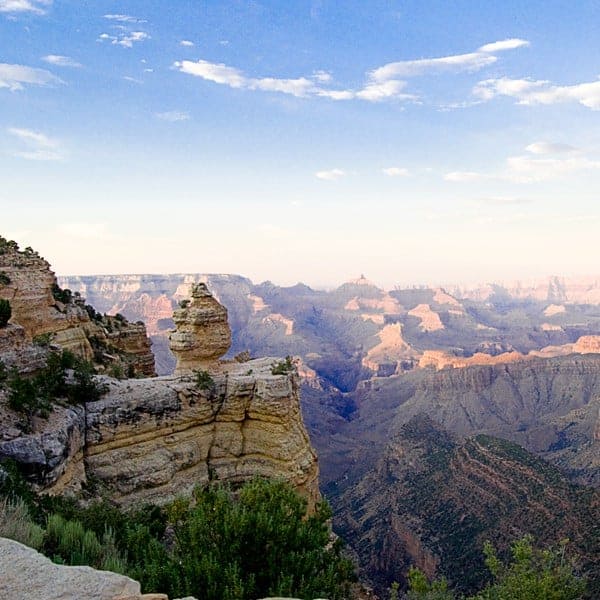
Up until this summer, the furthest west I’d ever been was Omaha. BeeBop spent some of his childhood years in New Mexico and Colorado, so he had lots of experience with the western part of our country. It has been a long time since he was back in that area, so he was excited to see it again.
Our youngest had never flown before and she was, to say the least, skittish. But once the plane got in the air, she was fine! When we touched down in Phoenix, she actually said “Woo-hoo! Let’s do that again!” She was a total trooper. Her brother was way too cool to be nervous about flying. Besides, he just flew to Hawaii and back last fall. No big deal :-)
Speaking of Phoenix, the day we flew the temperature was 118 degrees there. I know people will say, “but it’s a dry heat” and all that, but it just felt like an oven to me. I’m here to tell you 118 is hot, humidity or no. So, as soon as we got our rental car and cooled it down enough that we could touch the steering wheel, we headed for Flagstaff which would be our base for the week.
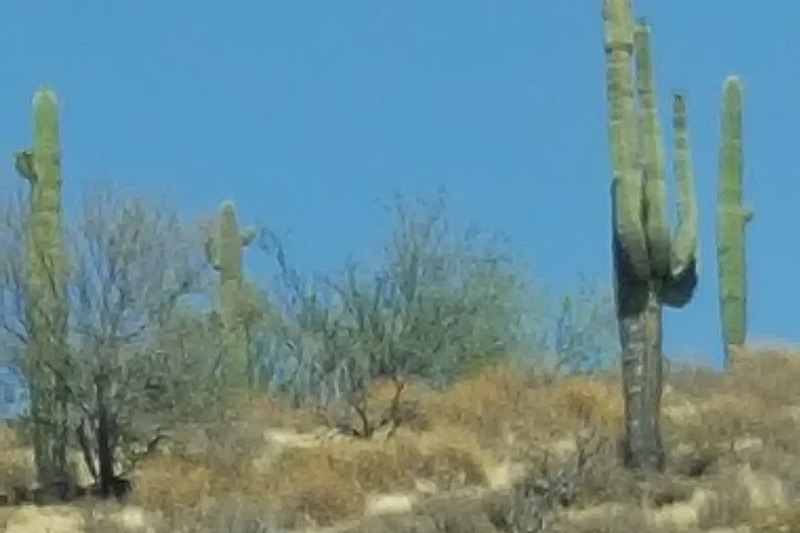
The drive to Flagstaff was amazing. As soon as we got outside Phoenix the landscape was covered as far as you can see with saguaro cacti. Those are the really tall ones with the arms that reach up toward the sky. It was like nothing I’d ever seen before. That’s something I said over and over for the whole week. In fact, the landscape was so foreign to our lush, green forest environment that it literally felt like being on another planet. I remarked many times as to how the desert area particularly looked like photos from Mars.
Now, there’s about a 6,000 ft. difference in altitude from Phoenix to Flagstaff so were climbing for the whole drive. And by the time we reached our destination, the landscape had totally changed. Flagstaff, in contrast to Phoenix, is quite nicely temperate and situated in a beautiful Ponderosa pine forest. But you can drive less than an hour and be right back in a desert. Just mind boggling.
Our time in Arizona was special in many ways for each of us and we saw so many fascinating things. I’m going to share just a few of the sites we enjoyed on our trip.
The Grand Canyon
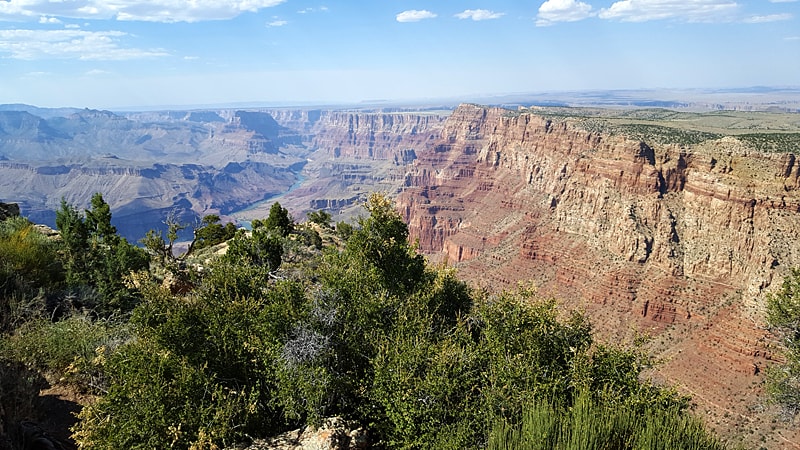
Of course, the highlight of our trip was the Grand Canyon. I’m not sure I have words to describe the experience of the Grand Canyon. It’s like something other-worldly. It’s beautiful and mysterious and intriguing and terrifying all at the same time. It’s unreal. I stood there looking out across the canyon thinking it didn’t even look real. It was almost like looking at a painting. I told BeeBop it was like my eyes couldn’t make my brain understand what they were seeing. It’s truly almost more than your mind can take in.
The canyon is 227 river miles long, up to 18 miles wide, and a mile deep. Its rugged landscape includes a variety of plants and animals from the desert next to the Colorado River deep in the canyon to the forest atop the North rim. The canyon walls show a beautiful sequence of rock layers serving as windows into time with rock nearly two billion years old in the bottom of the canyon.
The canyon also represents powerful ties between people and place. It has sustained people both spiritually and materially for thousands of years from Clovis hunters to ancestral Puebloan people. “The whole canyon and everything it it is sacred to us, all around, up and down,” says Rex Tilousi, Havasupai elder.
Sunset Crater Volcano
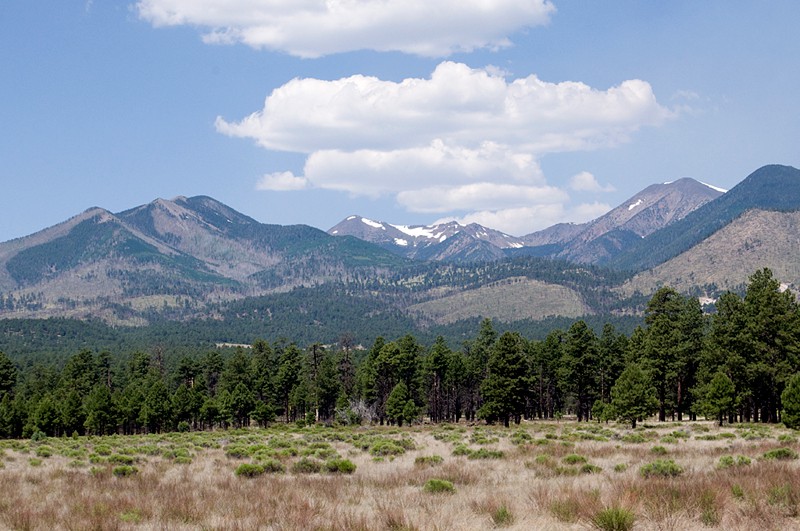
I had no idea there were volcanos in Arizona but I learned that there is a 6,000,000 year history of volcanic activity in the Flagstaff area. Sunset Crater Volcano erupted sometime between 1040 and 1100 and the resulting cinder cone is located in the San Francisco volcanic field which affects the climate and habitat for the entire area.
When the volcano erupted, the heavier debris accumulated around the vent and the lighter particles were carried by wind dusting 800 square miles of northern Arizona with ash. Two lava flows, the Kana-a and the Bonito destroyed all living things in their path. The resultant cinder dunes look like they were just formed yesterday with the soft, black ash still in place. We trekked through the ash around the one-mile lava flow trail which allows you to see a variety of features.
Cameron Trading Post
On our way to the Grand Canyon, we stopped for lunch at Cameron Trading Post, established in 1911 when a suspension bridge was erected over the Little Colorado River creating the first easy access over the gorge. At that time, Hubert and C.D. Richardson established the trading post where local Navajo and Hopi tribesmen bartered their wool, blankets, and livestock for dry goods.
In those times, a trip to the post could take days of travel by wagon. Guests were always treated as family, fed and housed by the trading post during their stay. Cameron Trading Post has existed for more than a century and the people who work there have done so for generations. The president of the company is descended from the original founders, and maintains the philosophy of hospitality and respect at Cameron Trading Post today.
The trading post’s dining room is dominated by its large stone fireplace. Native American weavings, basketry, carvings, and Southwestern art are displayed along the walls between the antique cabinetry and stained glass that once served as an apothecary. The menu offers a delicious selection of American, Mexican, and local cuisine.
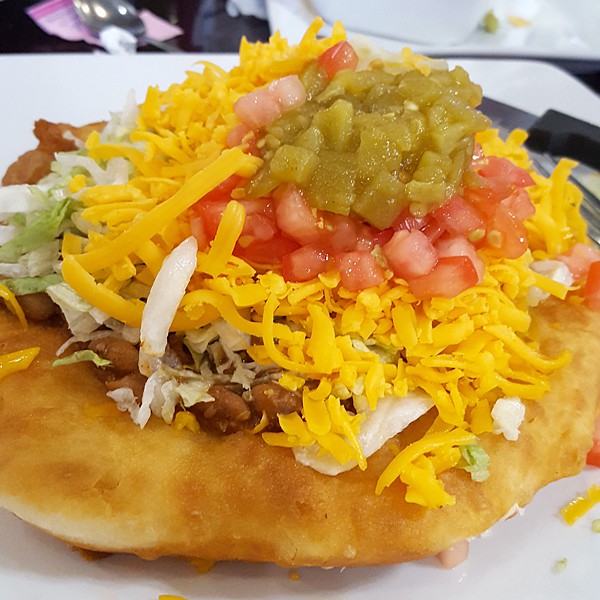
We chose to try the famous Navajo taco for our lunch. The taco is built on beautiful, delicious Navajo “fry bread,” a fresh, springy bread that is patted flat and deep fried to a golden brown, then smothered with a spicy combination of ground beef and beans, and topped with chopped green chile, fresh lettuce and tomato, and tangy cheddar cheese. This was my first time ever trying fry bread and it was totally delicious. It definitely wasn’t the last fry bread I enjoyed while in Arizona.
Little Colorado River Gorge
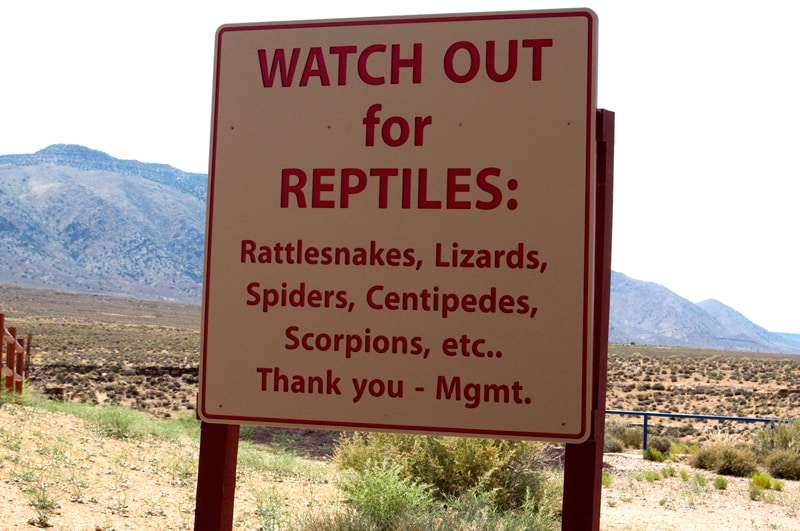
Not far from Cameron, and on your way to the Grand Canyon, you’ll find the Little Colorado River Gorge. Although the gorge is narrow, it conceals an astonishing depth. The walls are almost colorless, gray, grim, and forbidding. The Navajos regard it as just a part of their diversified land but visitors view it with awesome wonder.
From Cameron, the river begins to make a very rapid 2,000 ft. descent in elevation over just 30 miles to the Colorado River. The roadside stop for the gorge, includes a picnic ground and overlook with a view of the deep, narrow gorge with its finely layered upper limestone cliffs and massive sandstone below, evidence of a shallow sea 250 million years ago.
Meteor Crater

Another fascinating site of which I was completely unaware, is Meteor Crater, the world’s best preserved meteorite impact site on Earth. The crater is located just off Interstate 40 and old Route 66 near Winslow. Meteor Crater is the breath-taking result of a collision between an asteroid traveling 26,000 miles per hour and the surface of the Earth approximately 50,000 years ago releasing energy equivalent to more than 20,000,000 tons of TNT.
Meteor Crater is nearly one mile across, 2.4 miles in circumference and more than 550 feet deep. The venue has outdoor observation trails, indoor viewing, wide screen movie theater, an interactive discovery center, unique gift and rock shop, and Astronaut Memorial Park at the Visitor Center located on the crater rim. During the 1960s and 1970s, NASA astronauts trained in the crater to prepare for the Apollo missions to the Moon.
Walnut Canyon
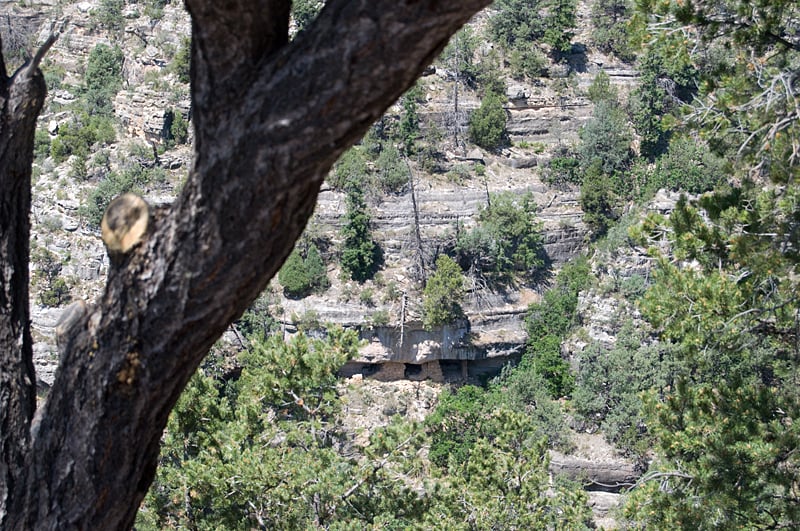
In the densely-wooded country southeast of Flagstaff, the small seasonal stream of Walnut Creek has carved a 600 foot deep canyon as it flows east, eventually joining the Little Colorado River on its way to the Grand Canyon. The exposed limestone that makes up the upper third of the canyon walls occurs in various layers of slightly differing hardness, some of which have eroded more rapidly forming shallow alcoves. During the 12th to 13th centuries many were used by the local Sinagua Indians who constructed cave-dwellings along the steep well-protected ledges, high above the canyon floor. Can you see the openings to the dwellings in the photo above?
Petrified Forest
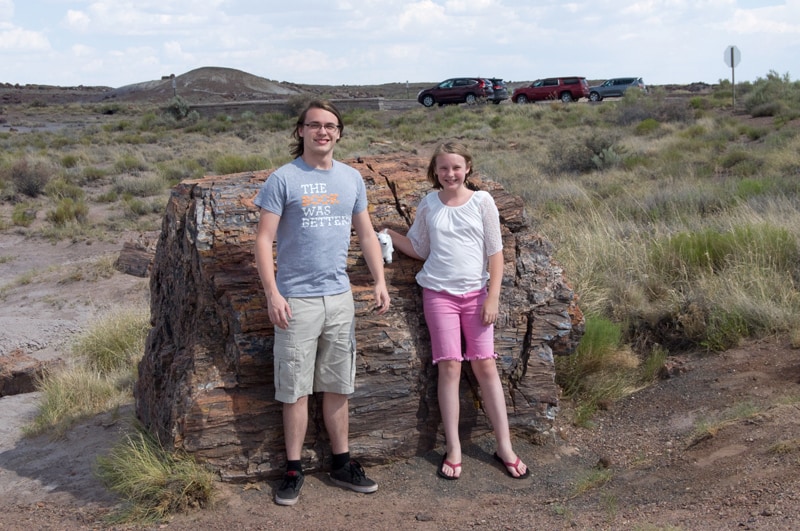
The Petrified Forest is known for its fossils, especially fallen trees that lived in the Late Triassic Period, about 225 million years ago. The sediments containing the fossil logs are part of the widespread and colorful Chinle Formation, from which the Painted Desert gets its name. Beginning about 60 million years ago, the Colorado Plateau, of which the park is part, was pushed upward by tectonic forces and exposed to increased erosion. All of the park’s rock layers above the Chinle have been removed by wind and water. In addition to petrified logs, fossils found in the park have included Late Triassic ferns, cycads, ginkgoes, and many other plants as well as fauna including giant reptiles called phytosaurs, large amphibians, and early dinosaurs. Paleontologists have been unearthing and studying the park’s fossils since the early 20th century.
The park hosts special events related to Earth Science Week and National American Indian Heritage Month. On Saturdays from Memorial Day weekend through Labor Day at the Painted Desert Inn, artisans from the region give cultural demonstrations related to ancient peoples, intertribal relationships, and European-descent cultures. For students and teachers, the rangers offer educational materials and field-trip talks. In some years during the summer months, artists-in-residence work in the park.
Painted Desert
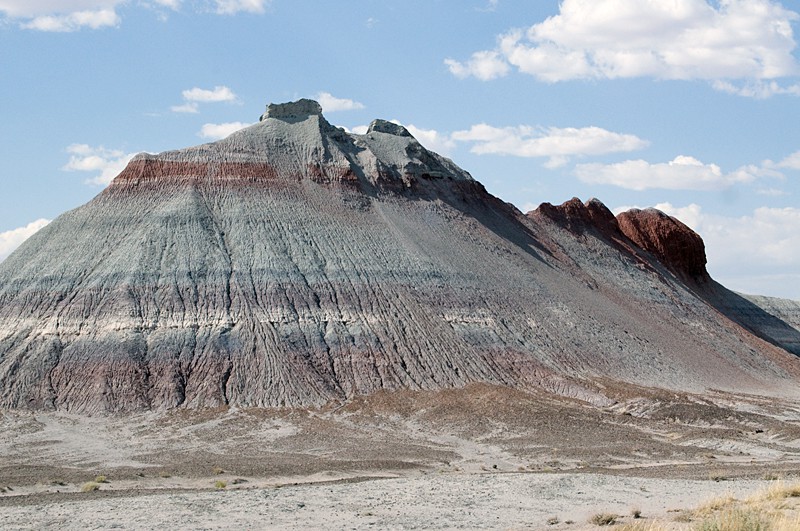
A natural canvas millions of years in the making, no one event shaped the Painted Desert. Home to some of the nation’s most memorable formations and features, volcanic eruptions, earthquakes, floods, and sunlight, all combined to create the Painted Desert. Deposits of clay and sandstone, stacked in elegant layers, reflect the setting Arizona sun in an altering display of colorful radiance. A remarkable sight that helps make Northern Arizona so unique and picturesque.
The Navajo and Hopi people have lived in this region for hundreds of years, but it was Spanish Colonialists who gave it the name we know it by today – El Desierto Pintado.
Lowell Observatory
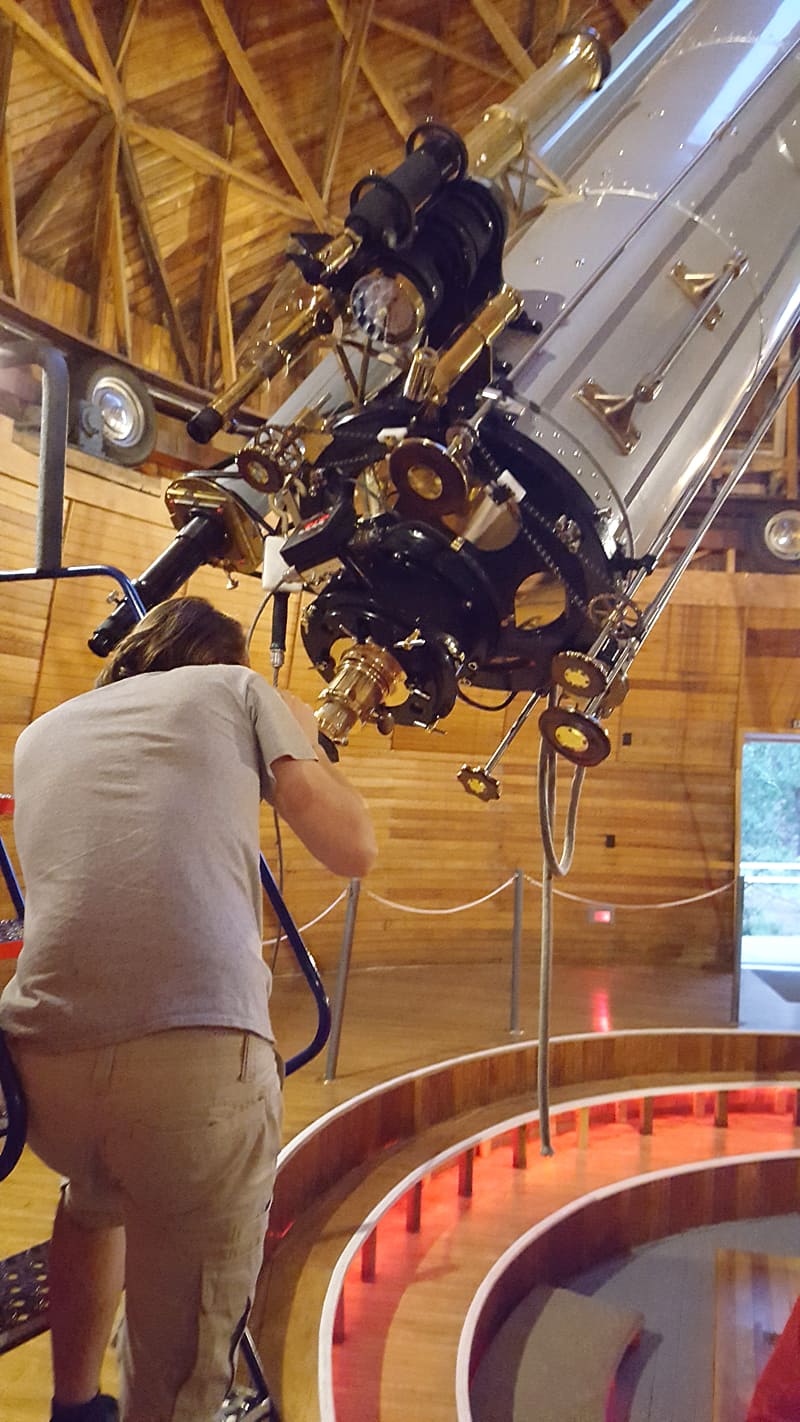
Lowell Observatory was founded in 1894 by Percival Lowell, a native of Boston. Lowell initially established his observatory to study the possibility of intelligent life on Mars. Lowell widely popularized his controversial theories, sparking debate among both the scientific community and lay public. In the following years, the observatory’s astronomers made several discoveries that dramatically altered our understanding of space, including Clyde Tombaugh’s discovery of Pluto in 1930 and V.M. Slipher’s detection of the expanding nature of the universe in 1912. Decades later, Apollo astronauts visited as part of their training to fly to the moon.
The observatory sits atop a mesa overlooking downtown Flagstaff. In 1960, they established a dark-sky research site at Anderson Mesa, 10 miles southeast of Flagstaff. Today their 180-acre use permit area on the Coconino National Forest hosts several telescopes and the Navy Precision Optical Interferometer.
In 2012, Lowell Observatory embarked on its greatest adventure yet with the completion of the 4.3-meter Discovery Channel Telescope. This new facility vastly expands the breadth of research capabilities for astronomers and their institutional partners. The partnership with Discovery Communications provides an avenue to bring results and breathtaking images to hundreds of millions worldwide.
Our visit to Lowell was one of the most fun and exciting times of our entire vacation. We geeked out on the telescopes which were trained on Jupiter that evening, each of us taking a turn to view the planet and two of its moons. We also had an opportunity to hear a fascinating lecture by one of the astronomers. It was totally awesome!
These are just a few of the things we saw and did during our time in Arizona. I left out several thing including our visit to Bearizona and a side trip to Winslow, Arizona. And, yes, we did stand on a corner in Winslow, Arizona. To say we enjoyed it would be such an understatement.
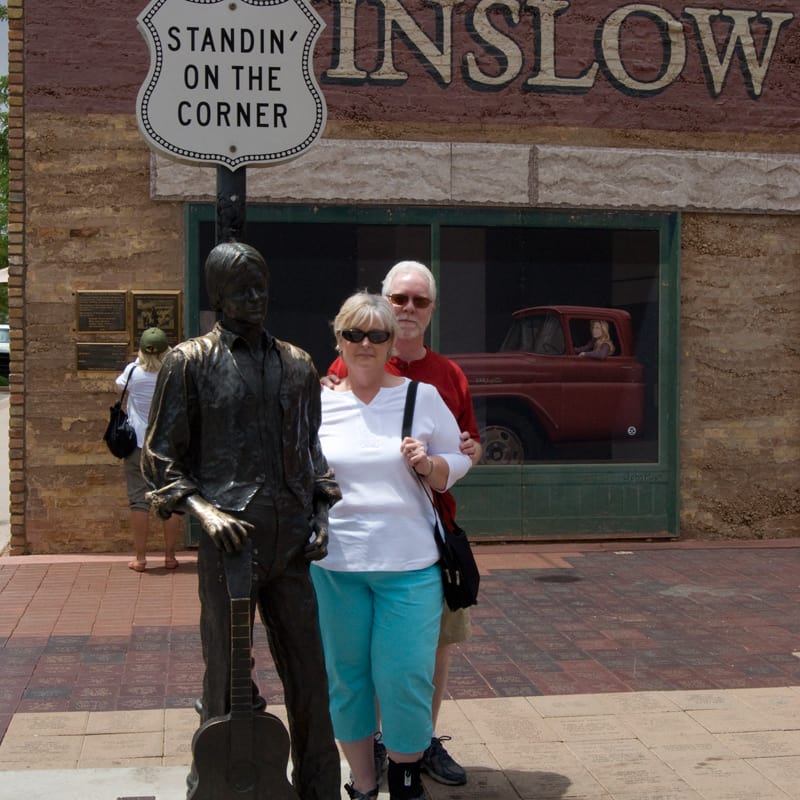


Do you remember Polly talking about her travels during the 1960’s and how she liked the Petrified Forest and Painted Desert? To think that three women took off, cross country, without the benefit of GPS and travelled just about every state is remarkable. She would have loved this post!
Thanks.
Miss P
She did talk about traveling a lot, but I don’t remember her going to the Petrified Forest and Painted Desert. I can see that she would like it, though. It’s a really interesting place.
So funny the picture you posted at the start was one I have, I recognized that spool looking rock. We were only there for 2 days and did not get to see everything. On my list to go back. We also stopped at Bearizona and took lots of pictures.
Wasn’t it amazing, Gloria? Took my breath away.
Thanks for sharing with us. They are beautiful photos. I miss the Southwest. I’m a Texan, living In Virginia for the past 30 years. My son was stationed in Arizona (I visited him there and we went on sightseeing trips), and as a child, we were stationed at Fort Carson, Colorado. Made trips to see the sights, but that was so long ago. This brought back memories. Thanks again.
You’re welcome, Dee Dee. It was my first time in the southwest and I was just blown away! So different from my lush, green environment here in Georgia.
Oh my goodness!!!! What a wonderful trip. I want to go to the observatory & dine on fry bread. And I am singing the Eagles “Take it Easy” in my head.
Well, I’m a standin’ on a corner in Winslow, Arizona
Such a fine sight to see
It’s a girl my Lord in a flat-bed Ford
Slowin’ down to take a look at me
Miss P
Actually, the observatory was one of the most fun things we did on the whole trip. Both the kids, but especially Aidan, were very interested in everything. Maggie loved looking through the huge telescopes and Aidan was totally riveted during the lecture. It was cool! And – yeah, the fry bread was some good stuff.